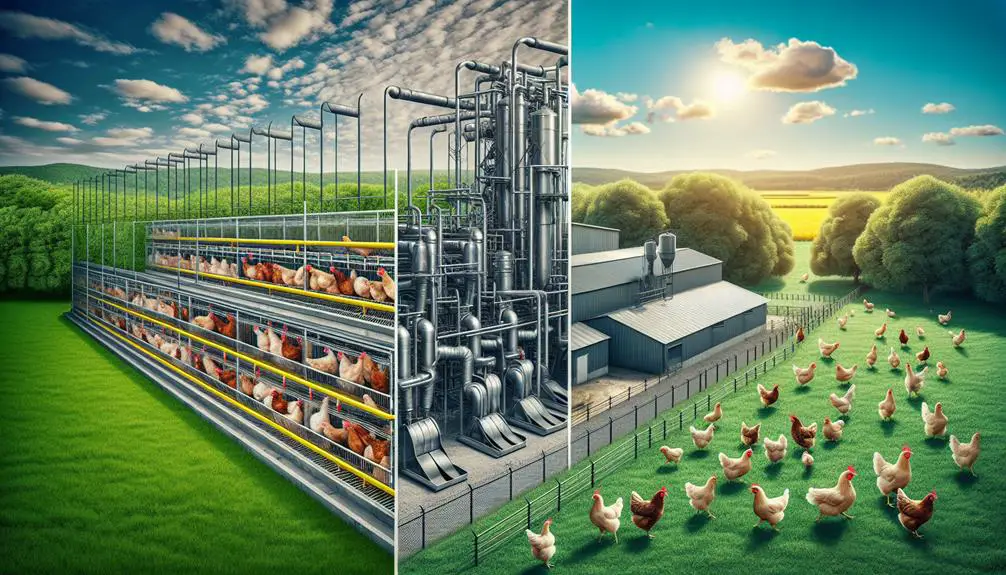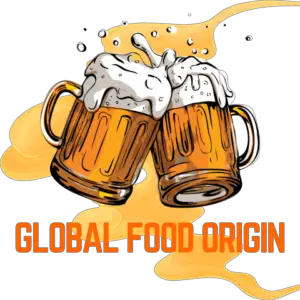Chicken breast is a popular food that comes from domesticated chickens. It has been eaten for a long time and is now a common ingredient in many recipes. People like it because it is lean and can be cooked in different ways, such as grilling, baking, or stir-frying.
The way we eat chicken breast today has been influenced by how people raised and traded chickens in the past. It’s interesting to learn about its history and how it has become a part of our culture and everyday meals.
Early Domestication and Historical Use

You mightn’t realize it, but the chicken breast you often enjoy has a history stretching back thousands of years.
Chickens were first domesticated from wild fowl in various cultures, a journey that can be traced through archaeological evidence.
In ancient times, chicken meat, including the breast, was a dietary staple, as referenced in old culinary texts.
Domestication of the Chicken
Chickens are everywhere now, but did you know they originally came from the jungles in Southeast Asia? People started to tame them from wild red junglefowl a really long time ago, like around 5400 BCE.
Ancient civilizations in Asia, the Middle East, and Africa used chickens for food and even for cockfighting.
The Harappan civilization in the Indus Valley might’ve been one of the first to tame them. Then, chickens spread to Persia, Egypt, and later to Greece and Rome.
This was a big deal for farming and food all over the world!
Historical Consumption of Chicken Meat
Back in olden times, people really liked to eat chicken, especially the yummy breast part.
They even wrote down recipes for cooking chicken in a book called ‘De Re Coquinaria’ by Apicius during Roman times.
The book tells us that the Romans really enjoyed eating chicken and made fancy dishes with the tender breast.
Chicken wasn’t just for regular meals, it was also for big feasts, showing how much they liked it.
The Greeks also thought chicken was tasty. In a funny play called ‘The Birds’ by Aristophanes, there are clues that show how they cooked and ate chicken.
Even in ancient China, a book called ‘Qi Min Yao Shu’ talks about raising and eating chickens, so it seems like everyone around the world liked chicken a lot.
Chicken in Agriculture and Trade

As you explore the evolution of poultry farming, you’ll see how selective breeding has consistently aimed to produce meatier chickens, particularly with larger breasts.
You can’t ignore the vast impact global trade has had on the dissemination of various chicken breeds, which in turn has shaped the characteristics of chicken breasts you find in the market today.
These practices and trade networks have been pivotal in creating the chicken breast’s journey from farm to your dinner plate.
Development of Poultry Farming
Poultry farming has changed a lot over time. Long ago, chickens were small and not very meaty.
But now, they’ve been bred to be bigger, especially their breasts, because people like to eat more white meat.
Farmers and scientists have worked to choose the best chickens for making bigger and meatier breasts that we see in the stores today.
Now, the chickens we see are much larger and grow quickly. People have also worked on making them eat less food and have a good attitude, so they can live well in crowded farms.
It’s important to know that the chicken breasts we eat today are the result of many years of careful breeding.
Global Trade and Spread of Chicken Breeds
Trade routes helped to move different kinds of chickens to different places around the world. This made the size and quality of chicken breasts better.
Long ago, people who traveled for trading and exploring brought special chickens with them.
They took these chickens on the Silk Road and on ships, so the chickens went to new places.
These chickens had bigger and meatier breasts, which people in the West liked.
Then, people started choosing which chickens to breed so that their babies also had big and tasty breasts.
That’s why the chicken breasts you see in the store are so plump and delicious.
All of this happened because of trading and mixing different kinds of chicken. So, when you eat chicken, you can remember that it came from all over the world.
Culinary Evolution of Chicken Breast

You’ve seen chicken breast transform from a simple staple to a star in the culinary world. Its versatility shines across numerous cuisines and has become central in countless iconic dishes.
With the rise of health-conscious eating, you’ll notice how cooking techniques have adapted, embracing modern innovations to keep this protein both nutritious and delicious.
Chicken Breast in Gastronomy
Chicken breast has become really popular in cooking. It’s used in lots of different kinds of food from all around the world.
Chefs like using it because it doesn’t have much fat and it doesn’t have a strong taste, so they can make it taste however they want.
You can find it in Caesar salad, in Asian stir-fries, and cooked really slowly to keep it juicy. In Italian food, it’s turned into Chicken Parmesan, and in Indian food, they use it for Chicken Tikka Masala with lots of spices.
People also like it because it’s healthy and has a lot of protein, and it works for diets that don’t have many carbs or gluten.
As time goes on, we’ll probably see chicken breast being used in even more new and cool ways in our favorite foods.
Innovations and Cooking Techniques
Chicken breast cooking has changed a lot over time. Now people use new ways to cook it that are healthier.
Instead of frying, they use methods like sous-vide, which keeps the chicken juicy without adding extra fat.
Grilling with tasty marinades adds flavor without too many calories. Air frying is also popular because it makes the chicken crispy without needing lots of oil.
Some people are now poaching and steaming chicken to keep it tender and fit with low-fat diets. Chefs are always trying new ways to cook chicken that tastes good and is good for you too.
Modern Industry and Ethical Considerations

You’ve seen chicken breast on your plate, but have you considered its journey from farm to fork?
As you bite into that tender meat, it’s crucial to recognize the massive scale of the poultry industry and its impact on animal welfare and our planet.
Understanding the ethical and environmental footprint of your food choices can empower you to make more informed decisions.
The Poultry Industry Today
Today, lots of chickens are raised to make yummy chicken breast. People all around the world love to eat it! Did you know that over 90 million tons of chicken are eaten every year?
In the United States, they made about 42.5 billion pounds of chicken in 2021. That’s a whole lot of chicken!
It’s amazing how much chicken we eat, and it’s cool to see how farms are working hard to keep up with the demand.
Ethical and Environmental Concerns
As we study more about raising chickens, it’s really important to think about how it affects the chickens.
Breeding chickens to have really big breasts can make them sick and have trouble with their bones and hearts.
This is something that people who care about animals are against because it’s not good for the chickens.
Raising chickens can also hurt the environment. It can cause deforestation, make the water dirty, and create a lot of greenhouse gases. But there’s some good news too!
The chicken industry is trying to find better ways to do things. They’re working on ways to manage waste and feed the chickens that are better for the environment.
This is a step in the right direction to make chicken farming more eco-friendly.
Nutritional Aspects and Health Implications

You’ve seen chicken breast featured prominently in health-conscious meals, but have you considered why it’s such a staple?
It’s packed with high-quality protein while being low in fat, setting it apart from other parts of the chicken.
Let’s explore how its nutritional profile fits into various diets and address any health controversies you might’ve heard about.
Nutritional Profile of Chicken Breast
Chicken breast is really good for you because it has a lot of protein and not too much fat. It’s better for you than the fattier parts of the chicken like thighs or wings.
It also doesn’t have many calories or carbs, so it’s good if you want to stay healthy or build muscles. Chicken breast also has vitamins that help your body work properly.
Chicken Breast in Health and Diet
Adding chicken breast to your meals can really help you with losing weight and getting stronger because it has lots of protein and not too much fat.
It’s a popular choice for people who want to lose weight or gain muscle. The protein can make you feel full for longer, so you won’t want to eat unhealthy snacks.
Athletes and people who work out a lot like to have chicken breast after exercising to help their muscles grow back stronger.
Some people argue about whether chicken breasts have bad stuff in them, like hormones, but in many places, it’s against the law to give chickens hormones.
But you should be careful about how much salt is added to packaged chicken breast because too much salt can be bad for your health.
Wrapping Up
You learned about how chicken breasts became a popular food from long ago to now. People used to trade and grow chickens, which affected money.
People also changed how they cooked chicken over time.
You know that chicken can be good for you, but some people argue about it.
Now you can make smart decisions about eating chicken, thinking about its history and how it’s made today.
